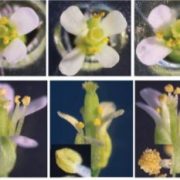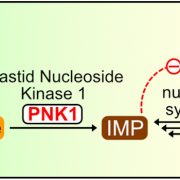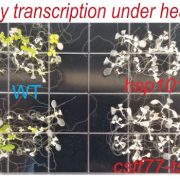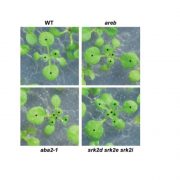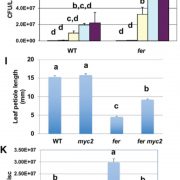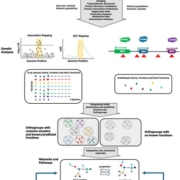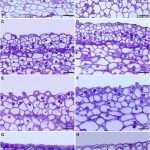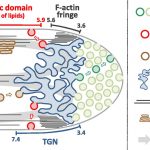Dwarfed no longer: how one mutant can help the other
Willems et al. establish that meristem organization and development rely on Anaphase Promoting Complex/Cyclosome-mediated breakdown of a cyclin.
Plant Cell https://doi.org/10.1105/tpc.20.00208
By Alex Willemsa,b and Lieven De Veyldera,b
aDepartment of Plant Biotechnology and Bioinformatics, Ghent University, Ghent, B-9052, Belgium
bCenter for Plant Systems Biology, VIB, Ghent, B-9052, Belgium
Background: Cell division in multicellular organisms is strictly regulated so that tissues of the body form correctly. One way to achieve such regulation is the selective breakdown of rate-limiting cell division proteins when they are no longer needed. The Anaphase-Promoting Complex/Cyclosome (APC/C) is a key player in this process, marking cell cycle proteins for destruction through attachment of a ubiquitin group. The APC/C recognizes its targets with the help of an activator subunit, such as the CELL CYCLE SWITCH 52 A2 (CCS52A2) protein. Mutant Arabidopsis plants lacking CCS52A2 display dwarfism, due to severe disorganization of the cell division patterns in the root and shoot.
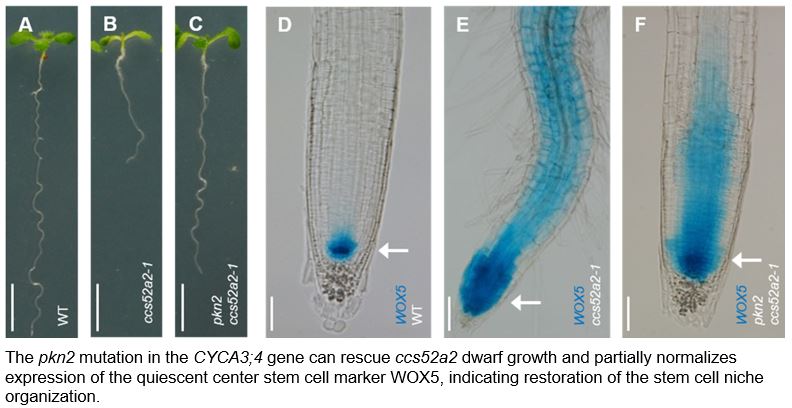 Question: We aimed to identify which cell cycle regulators are marked for breakdown by the CCS52A2-activated APC/C to explain why plants struggle to grow when appropriate APC/C activation cannot occur. As the dwarf growth phenotype might be explained by the inappropriate accumulation of an APC/C target protein, we searched in the ccs52a2 mutant background for secondary mutations that restored plant growth.
Question: We aimed to identify which cell cycle regulators are marked for breakdown by the CCS52A2-activated APC/C to explain why plants struggle to grow when appropriate APC/C activation cannot occur. As the dwarf growth phenotype might be explained by the inappropriate accumulation of an APC/C target protein, we searched in the ccs52a2 mutant background for secondary mutations that restored plant growth.
Findings: A mutation preventing production of the CYCLIN A3;4 (CYCA3;4) cell cycle regulator partially counteracted the dwarf growth phenotype of ccs52a2 mutant plants. The lack of the closely related CYCA3;1 and CYCA3;2 genes did not restore mutant dwarf growth, highlighting the unique role of CYCA3;4. We confirmed that CYCA3;4 is a true target for APC/CCCS52A2-mediated breakdown, as it remained present throughout mitosis in the ccs52a2 mutant, but disappeared after prophase in wild-type plants. Moreover, CYCA3;4 plays a unique role in the cell divisions that relate to stem cells, possibly through phosphorylating the key cell cycle regulator Retinoblastoma-related 1 (RBR1). Combined, the data indicate that CCS52A2-activated APC/C controls stem cell-associated cell divisions through the temporal control of CYCA3;4 levels, marking CYCA3;4 as an important regulator in the field of stem cell biology.
Next steps: The lack of CYCA3;4 does not completely restore ccs52a2 mutant growth, meaning that additional proteins need to be timely marked for destruction by CCS52A2-activated APC/C. Identifying and characterizing these targets and studying their interplay with CYCA3;4 will clarify how timely and spatial control of cell division control plant growth.
Alex Willems, Jefri Heyman, Thomas Eekhout, Ignacio Achon, Jose Antonio Pedroza-Garcia, Tingting Zhu, Lei Li, Ilse Vercauteren, Hilde Van den Daele, Brigitte van de Cotte, Ive De Smet, and Lieven De Veylder. (2020). The Cyclin CYCA3;4 Is a Post-Prophase Target of the APC/CCCS52A2 E3-Ligase Controlling Formative Cell Divisions in Arabidopsis. Plant Cell; DOI: https://doi.org/10.1105/tpc.20.00208



